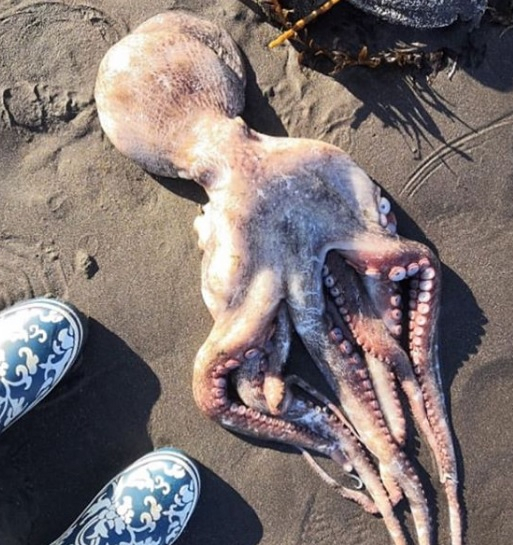Local residents in Russia's the Far East noticed dozens of dead sea animals washed ashore a beach from the Pacific Ocean. Environmentalists are concerned about marine life as the tests conducted on the water samples, taken from the Khalaktyrsky beach in Russia's Kamchatka region revealed that petroleum levels were four times higher and phenol levels were also 2.5 times higher than usual.
A non-governmental environmental organization, Greenpeace which called the incident an "ecological catastrophe," said in a statement that "the scale of the contamination has not yet been determined, but the fact that dead animals are found all along the coast confirms the seriousness of the situation."

Marine Species in Danger
Over the weekend, images were shared across the social media showed dead octopuses, sea urchins, crabs, large fish, and other marine animals that had washed up on the beach of the Russian Far East. But as of now the cause of this disaster is still unknown.
There are no official reports about industrial accidents or oil spills in that region. However, understanding the threat to marine life, the environmentalists are now demanding an investigation to determine the reason behind the marine disaster and the extent of ocean contamination.
However, as reported by TASS, which is a Russian news agency, an unnamed source claimed that there was an alleged leak at a commercial oil tanker and that is probably the reason behind the contamination. But environment experts questioned the idea of petroleum leakage as they fear that there is a possibility of pesticide contamination, caused by a nearby highly-secretive plant.
Downplay the Incident
The local authorities tried to hide the actual facts about the incident and published videos, featuring clean beach while stating that "the color of the water is normal, the smell of the air is normal, the beach is completely clean." But popular blogger Yuri Dud shared a recent video of a Kamchatka resident that shows an oil spill in the Pacific Ocean and a large number of dead marine animals on the shore.
Kamchatka Governor Vladimir Solodov told media on Sunday, September 4 that the authorities are launching an investigation into the ocean contamination during which they would take more samples from the beach, animals, and ocean water for testing. He also warned that people from the local authority will be fired if they are found to have involved in any cover-up and downplay the situation.
Irina Yarovaya, deputy chair of Russia's State Dum has alleged that local authorities did not take any action to prevent the environmental damage and also raised questions over the methods they used to collect the samples.
As per the local residents, they noticed the issue almost three weeks ago after the swimmers and surfers went into the water and suddenly started to feel sick. One of the surfers also reported that he had experienced blurred vision, dry and painful eyes as well as sore throat after he came into contact with the water in that area. While explaining the current situation, he said it became worse. In an Instagram post he wrote, "The water doesn't smell like the ocean, it's sticky, bitter and dirty. Fish are dead on the shore."
Environmental Issues in Russia
The environment-related problems have become more frequent in Russia in recent years, and a number of environmental activists have raised their voices against issues like landfills and garbage disposal.
Even environmentalists have expressed their concerns about the Russian nuclear submarine, K-159, that sank in the Barents Sea in 2003 along with 800 kilograms of uranium. Norwegian Radiation Protection Authority said it needs to be monitored continuously as the place where it is situated now, is an important habitat of haddock, red king crab, polar bears, walruses, whales, and many other animals.
Understanding the risk factors of keeping such vulnerable wrecks underwater for such a long time that can pose a huge threat to marine life and the ecosystem, Russian state atomic energy corporation has made a plan to remove the most dangerous radioactive items from the country's Arctic seafloor.









